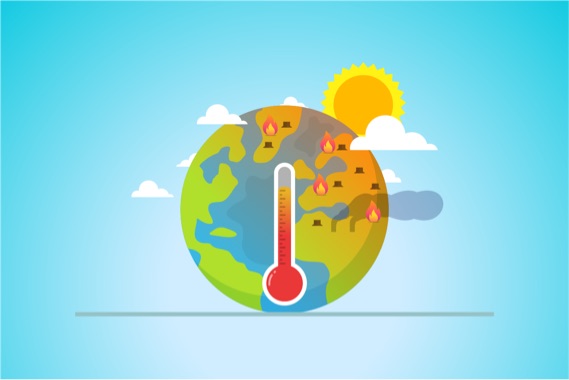Extreme heat and ozone peaks
Due to global warming, the Brussels-Capital Region is likely to experience increasingly regular periods of extreme heat, often accompanied by high ozone concentrations in the air. These concentrations are caused by the polluting gases emitted into the air all year round by road traffic, heating installations and industry. Ozone is formed when the sun shines on these polluting gases in hot weather.
Heat and ozone: a health risk
Periods of high temperatures are a risk to our health. We are not all equal when it comes to heat.
The following groups are most at risk:
- the elderly,
- babies and young children,
- chronically ill and dependent people (especially if they live alone).
Extreme heat can cause dehydration, heat cramps, exhaustion and heat stroke. Prolonged exposure to ozone can cause breathing difficulties, usually accompanied by heart problems, eye irritation, headaches and sore throats.
The Ozone and Heat Plan
Since 2005, the country's different authorities have had a plan to better protect the public and limit the consequences of heat and ozone peaks. Regional authorities and agencies will ensure that heat warnings are disseminated and that the general public, organisations and professionals working with vulnerable groups are made aware of them. To inform the public and implement measures in the event of hot weather and/or ozone peaks, the Brussels-Capital Region has drawn up a plan that pays particular attention to people at risk, as part of the implementation of this national plan. The Ozone and Heat Plan makes it possible to anticipate these episodes and implement actions to prevent and limit the risks for residents, especially vulnerable people.
The Ozone and Heat Plan is progressive and has three phases. The transition from one phase to the next is based on temperature forecasts from the Royal Meteorological Institute (RMI) and ozone concentration forecasts from the Interregional Environment Unit (IRCEL-CELINE).
- Vigilance phase
The vigilance phase runs from 15 May to 30 September, regardless of the weather conditions. During this phase, the Region launches awareness campaigns on the risks associated with extreme heat and ozone peaks.
Please inform young children or elderly, dependent and/or isolated people, or those suffering from respiratory problems.
Nursing and care homes, crèches and day-care centres for people with disabilities are specifically informed, and the Brussels Environment information line is available throughout the vigilance phase. (Tel. 02/775.75.75)
- Warning phase
The warning phase is triggered if heat peaks are forecast to last several days. The authorities then inform the public, healthcare professionals, health facilities, local authorities and other partners of the health risks and precautionary measures.
During this phase, the media will remind you of the steps you can take to limit the risks. Institutions caring for more vulnerable groups, such as infants and the elderly, are required to be even more vigilant.
Alert phase
The alert phase is triggered when the measures already implemented need to be reinforced due to extreme heat and ozone peaks.
In addition, the alert phase is not based solely on objective criteria linked to temperature and ozone concentration. A risk analysis unit, in consultation with the authorities, considers stepping up the measures already taken or introducing new measures, such as cancelling or postponing sporting or cultural events.
Practical advice
Extreme heat and/or high ozone concentrations can be harmful to everyone, even healthy people.
Take the right steps to limit the risks:
- Drink more water. Drink more, especially more water: two to four glasses an hour. Make sure babies, young children, the elderly and dependent people drink enough and drink regularly. Limit alcohol, coffee and sugary drinks.
- Reduce physical exertion, especially during the hottest hours, between 12 and 4 pm.
- Caulk your windows.
- Stay indoors if possible. Keep curtains and shutters closed during the day to keep the heat out, and open them at night when it is a bit cooler.
- Never leave a child, a person with limited independence or a pet in an unventilated, stationary car.
- Join an intergenerational vigilance network. This helps to limit the risks to vulnerable people in your building, street or neighbourhood.
- Take regular steps to cool down. Spray yourself with cold water and take advantage of the region's cool spots, near lakes and in the shade of trees in parks.
- Everyone can help reduce the intensity of ozone peaks by reducing pollutant emissions on a permanent basis, for example, by avoiding using the car and choosing public transport.

Liens utiles
Apprenez-en plus sur la manière dont vous pouvez vous préparer face aux épisodes de forte chaleur et pics d’ozone :




